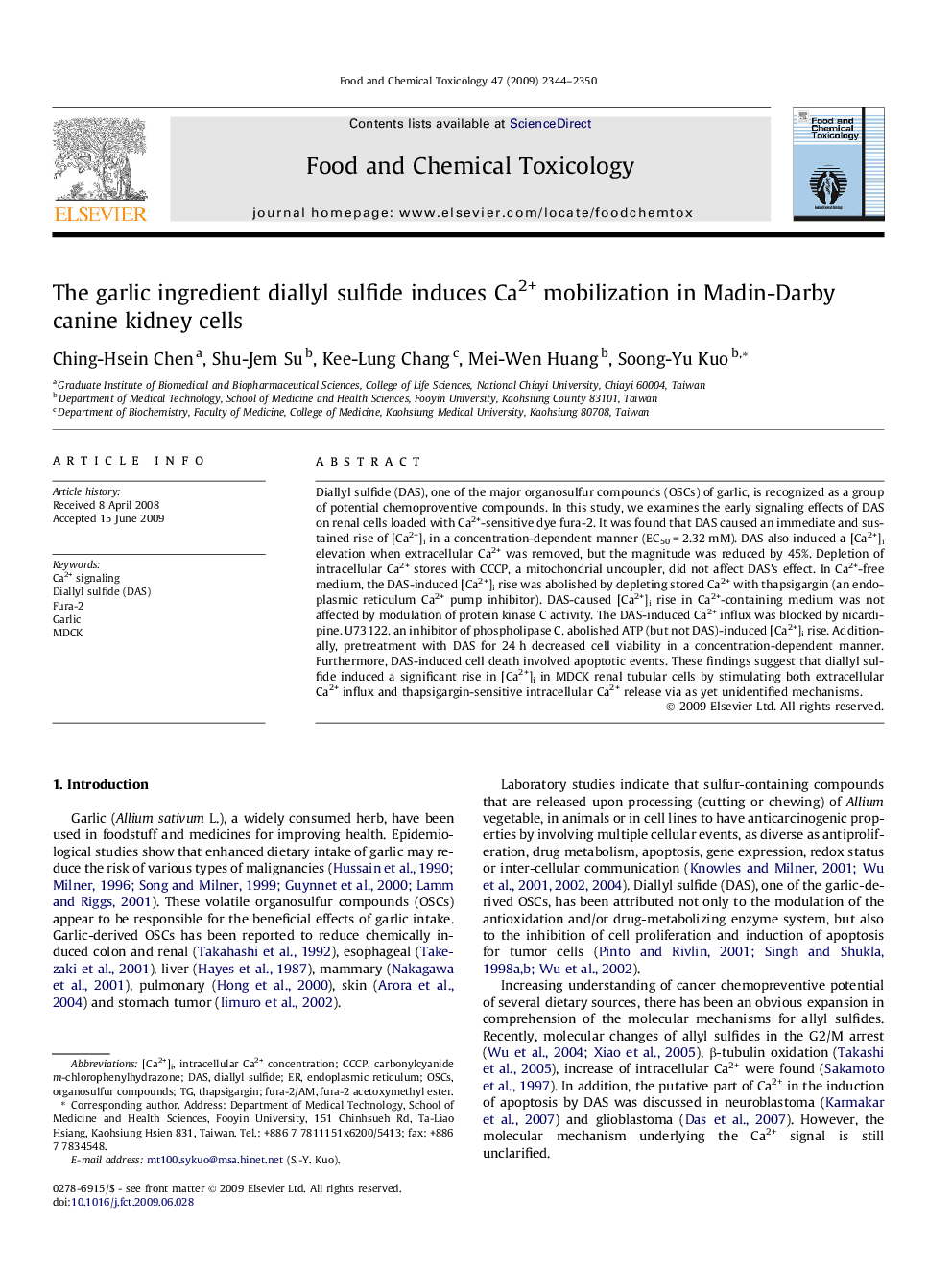| Article ID | Journal | Published Year | Pages | File Type |
|---|---|---|---|---|
| 2586127 | Food and Chemical Toxicology | 2009 | 7 Pages |
Diallyl sulfide (DAS), one of the major organosulfur compounds (OSCs) of garlic, is recognized as a group of potential chemoproventive compounds. In this study, we examines the early signaling effects of DAS on renal cells loaded with Ca2+-sensitive dye fura-2. It was found that DAS caused an immediate and sustained rise of [Ca2+]i in a concentration-dependent manner (EC50 = 2.32 mM). DAS also induced a [Ca2+]i elevation when extracellular Ca2+ was removed, but the magnitude was reduced by 45%. Depletion of intracellular Ca2+ stores with CCCP, a mitochondrial uncoupler, did not affect DAS’s effect. In Ca2+-free medium, the DAS-induced [Ca2+]i rise was abolished by depleting stored Ca2+ with thapsigargin (an endoplasmic reticulum Ca2+ pump inhibitor). DAS-caused [Ca2+]i rise in Ca2+-containing medium was not affected by modulation of protein kinase C activity. The DAS-induced Ca2+ influx was blocked by nicardipine. U73122, an inhibitor of phospholipase C, abolished ATP (but not DAS)-induced [Ca2+]i rise. Additionally, pretreatment with DAS for 24 h decreased cell viability in a concentration-dependent manner. Furthermore, DAS-induced cell death involved apoptotic events. These findings suggest that diallyl sulfide induced a significant rise in [Ca2+]i in MDCK renal tubular cells by stimulating both extracellular Ca2+ influx and thapsigargin-sensitive intracellular Ca2+ release via as yet unidentified mechanisms.
